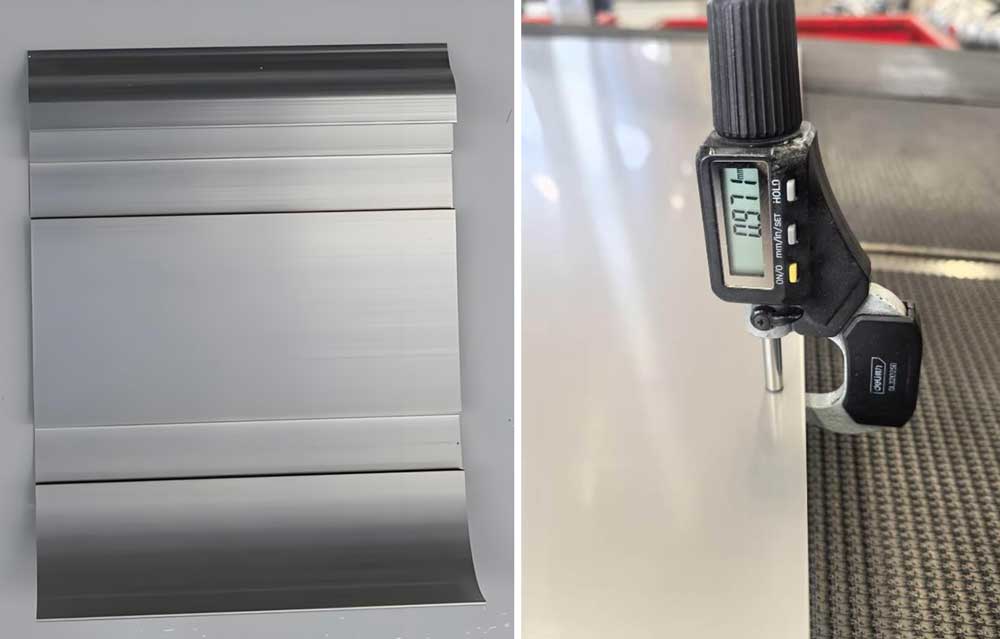Overview
In previous articles, we have introduced stainless steel applied into buildings, vessels and bridges. We find whether in architectural field, LNG carriers or bridge construction, aluminum still plays a significant role despite the upward trend of stainless steel consumption.
For example, the skin of Atomium in Belgium was replaced with stainless steel in its renovation project. LNG carriers use stainless steel and aluminum to resist extremely low temperatures and high pressures. In more recent case of the Bridge of Aspiration in UK, aluminum plays the main part with stainless steel as the supporting role.
This week let us explore the difference between aluminum and stainless steel. Having the differences in mind, we will have a clear picture in terms of material selection: aluminum or stainless steel.
Why Aluminum or/and Stainless Steel?
Aluminum and stainless steel can be two of the most widely used metals in engineering and manufacturing applications. Their special set of properties make them quite suitable for varied manufacturing methods and applications, ranging from machining to casting in terms of methods, and from food industry to vehicles in light of applications.
For applications where metal is considered, stainless steel and aluminum are always on the list for comparison, justified by the cost/weight/strength analysis in the case of Bridge of Aspiration. Both materials are corrosion resistant, temperature resistant and recyclable. Though they look similar, these two materials are fundamentally different in their properties (as below table).
| Property | Aluminum | Stainless Steel |
|---|---|---|
| Common Grades | 1050, 1060, 3003, 6061 | 304, 316L |
| Corrosion Resistance | Mild to Good | Good to Excellent |
| Tensile Strength (MPa) | 70 – 140 (pure aluminum) 270~310 (aluminum alloys like 6061) |
520 – 1100 |
| Density (g/cm³) | 2.7~2.71 (pure aluminum) 2.63~2.85 (aluminum alloys) |
7.75 – 8.0 |
| Heat Resistance (°C) | Up to 200 – 400 | Up to 800 – 1200 |
| Melting Point (°C) | 660 | 1375 – 1455 |
| Thermal Conductivity [W/(m·K)] | 205 – 237 | 10 – 30 |
Material Selection: Aluminum or Stainless Steel?
To know when to use aluminum or/and stainless steel is vital for project success. Material selection does make a difference in project longevity, as illustrated in previous article “stainless steel applied in the world’s longest pier”. Below listed are the key factors which highlight the differences between these the two materials, aluminum and stainless steel.
Aluminum or Stainless Steel: Which is More Costly?
In terms of price per weight i.e., USD/KG, the difference between aluminum and stainless steel is minor. However, the disparate densities (as above table listed) make the costs of the two strikingly different.
In light of cost per volume, aluminum can be cheaper than stainless steel by 2/3. This can make quite a difference on initial investment when used as building skin for instance. However, from a long-term perspective, the life cycle costs can speak another story.
Aluminum or Stainless Steel: Which has Superior Strength-to-Weight Ratio?
Aluminum has superior strength-to-weight ratio to stainless steel. With strength around half that of stainless steel, aluminum is lighter by 2/3. This light-weight characteristic makes aluminum quite popular in transportation tools ranging from auto industry to airplane manufacturing.
However, when weight matters to a lesser degree as strength, stainless steel will be the preferred choice. That’s why stainless steels are more used in high-stress or load-bearing applications like structural parts or as reinforcing parts. If duplex stainless steel like 2205 is considered, weight and strength dilemma can be resolved to some extent.
Aluminum or Stainless Steel: Which is More Corrosion Resistant?
Overall, stainless steel outperforms aluminum in corrosion resistance, especially in harsh environment, like exposure to chloride or acid. From this perspective, stainless steel always wins with almost absolute advantage.
Even under mild conditions where aluminum and stainless steel are replaceable, like building skin, aluminum can corrode without regular maintenance. In contrast stainless steel can stand even one hundred years without maintenance as illustrated in the case of the Empire State Building.
Aluminum can get an oxide film resulting in pitting corrosion and further erosion of the material, after long-term exposure to water or other elements in the atmosphere if left untreated. When it comes to stainless steel, it forms a protective film on its surface to protect itself from corrosion. What’s more, stainless steel is non-porous, which further enhances its corrosion resistance.
Aluminum or Stainless Steel: Which is Easier to Work With?
Aluminum is easier to work with in comparison with stainless steel, because it is soft and malleable, easier to bend, stretch, cut, machine or assemble. However, for the same reason it is easily dented, warped, or scratched.
In contrast stainless steel is harder, tougher with a higher melting point. This makes it difficult in forming, cutting, welding, and drilling.
Due to lower melting point, aluminum can become softer with elevated temperatures, while stainless steel can maintain its strength under high temperatures. When it comes to extremely cold temperatures, aluminum perform better as stainless steel can grow brittle.
Aluminum or Stainless Steel: Which is More Environment Friendly?
Aluminum and stainless steel are recyclable materials. Both of them can be recycled indefinitely without degrading their quality, but aluminum is recycled more often.
In short term, aluminum is more environment friendly, because the production of stainless steel is more complicated with more carbon emissions. However, from a long-term perspective, stainless steel has better environment impact because its durability and recyclability give rise to a lower overall impact over its lifespan.
Conclusions
Both aluminum and stainless steel are widely used materials in varied fields from home appliances to aerospace industry. Which one is better depends on applications and budget.
If you are looking for stainless steel materials from China, CIVMATS will be here for you. Whether you are in the market for long products like stainless steel bars, stainless steel pipe tubes, stainless steel wires or/and flat products such as stainless steel sheet coil plate strips, we can customize per your requirement. Choose CIVMATS, choose reliability.

